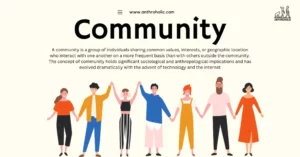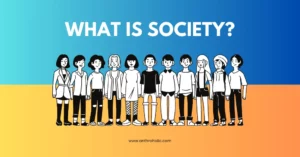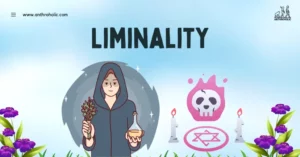AI Answer Evaluation Platform Live Now. Try Free Answer Evaluation Now
Sanskritization
Sanskritization is one of the most important concepts in Indian sociology and anthropology. Coined by the Indian sociologist M.N. Srinivas in the 1950s, it explains how certain social groups in India try to improve their position in the caste hierarchy by adopting the practices, rituals, and lifestyles of higher castes especially the Brahmins.

The significance of Sanskritization lies in the way it reflects both continuity and change in Indian society. On the one hand, it shows how caste continues to influence social behavior. On the other, it highlights the aspirations of communities who, instead of passively accepting their status, actively seek ways to move upward in the social ladder. For students of anthropology and sociology, Sanskritization offers deep insights into the dynamics of social mobility, cultural change, and identity formation in India.
What is Sanskritization?
In simple terms, Sanskritization means “changing social status through imitation.” A caste or community, usually lower in the hierarchy, attempts to elevate its status by adopting:
- Vegetarianism and restrictions on meat or alcohol
- Wearing sacred thread (janeu) or following Brahmin rituals
- Worshipping deities associated with higher castes
- Practicing purity rules in food and marriage
Over time, such practices help the group claim a higher status in the local social order, even though the larger caste hierarchy remains intact.
Why Does Sanskritization Happen?
Sanskritization is not just about copying rituals it reflects a community’s deeper desire for dignity, recognition, and progress within a hierarchical society. Several factors explain why groups choose this path:
- Cultural Aspiration and Identity: Beyond material benefits, Sanskritization also satisfies a psychological need. It allows communities to redefine their identity, narrate new myths of origin, and claim a more prestigious past that aligns them with higher varnas.
- Aspiration for Higher Status: Communities at the lower end of the caste hierarchy often face stigma and social exclusion. By adopting the cultural symbols of higher castes such as vegetarianism, ritual purity, or worship of Sanskritic gods they attempt to elevate their standing and gain greater respect in society.
- Access to Power and Resources: In traditional India, ritual status was closely linked to economic and political opportunities. A caste seen as “higher” could secure better positions in administration, land ownership, or community leadership. Sanskritization thus became a strategy to move closer to these advantages.
- Integration with Mainstream Hindu Society: Many communities especially tribal groups or marginalized castes used Sanskritization as a way to merge with the dominant social order. By adopting Hindu rituals and identities, they sought acceptance and legitimacy within the broader cultural framework.
- Competition Between Castes: Social mobility is not always individual it can be collective. Entire castes sometimes Sanskritized themselves to compete with rival groups, particularly in regions where multiple intermediate castes vied for influence.
Examples of Sanskritization
Sanskritization has been observed in many regions of India, and it has taken different forms depending on the local social context:
- South India: Several lower castes abandoned older practices such as animal sacrifice and the consumption of meat and liquor. By adopting vegetarianism, performing Sanskritic rituals, and aligning with Brahmanical values, they were able to claim higher ritual purity and push for recognition as “twice-born” castes.
- North India: Communities like the Yadavs, Kurmis, and Jats used a combination of rituals, folklore, and historical claims to establish themselves as descendants of the Kshatriya varna. This was not only about adopting practices but also about rewriting history and identity to support their upward movement in the caste order.
- Tribal Groups: Some tribal communities gradually incorporated Hindu rituals, Sanskritic deities, and purity rules into their cultural systems. Over generations, this allowed them to be absorbed into the caste framework, often at a higher position than their earlier outsider status.
Case Studies of Sanskritization
Yadavs of North India: Traditionally pastoral, Yadavs sought higher status by adopting vegetarianism, worshipping Krishna, and projecting themselves as Kshatriya descendants. Through folklore, petitions, and the All-India Yadav Mahasabha (1924), they combined ritual change with political mobilization to climb the caste ladder.
Coorgs of Karnataka: Observed by M.N. Srinivas, the Coorgs gave up meat during rituals, adopted Brahmanical practices, and employed Brahmin priests. This became the foundation for Srinivas’s concept of Sanskritization.
Tribal Groups (Gonds, Bhils): Many tribal groups moved towards Hindu society by celebrating festivals like Diwali, worshipping deities such as Shiva and Vishnu, and claiming higher lineages though often at the cost of their indigenous traditions.
Criticism of Sanskritization
While Sanskritization is an important concept in understanding social mobility, it has significant limitations:
- It does not challenge the caste system: The process works within the framework of caste rather than questioning it. By imitating higher castes, lower groups accept the hierarchy as legitimate, which means Sanskritization merely reshuffles positions rather than dismantling inequality.
- It ignores other mobility processes: Sociologists point out that Sanskritization alone cannot explain the complexity of social change in India. Westernization, modernization, education, economic development, and political assertion have been equally, if not more, important in reshaping identities and opportunities.
- It reinforces patriarchy and exclusion: Sanskritization often strengthens upper-caste patriarchal norms. Women are expected to conform to strict purity rules, and Dalits or marginalized voices find little scope for empowerment through this process. As a result, it offers limited possibilities for genuine equality.
Relevance Today
Even in 21st-century India, the influence of Sanskritization has not disappeared. Communities continue to use cultural strategies to negotiate higher status:
- Temple-building and sponsoring religious rituals are often employed as symbols of prestige.
- Claims of descent from ancient lineages or mythological heroes remain a way of asserting dignity.
- Dietary changes and public demonstrations of ritual purity continue to be seen as markers of status.
However, Sanskritization today operates alongside modern forces. Education, reservation policies, urbanization, economic opportunities, and democratic politics now play a stronger role in shaping mobility. Many groups prefer asserting their rights through political organization rather than only through cultural imitation. This shows how Sanskritization has adapted but also become less dominant compared to other drivers of change.
Conclusion
Sanskritization remains a powerful lens to study how culture and status interact in Indian society. It demonstrates that even in a rigid caste framework, communities have historically found ways to move upward through cultural transformation. Yet, its limitations cannot be ignored it does not dismantle caste inequality but merely allows certain groups to negotiate a better position within it.
For students of sociology and anthropology, Sanskritization is a cornerstone concept to understand the aspirations, struggles, and adaptability of Indian communities. It highlights the creativity with which people navigate structures of power, while also reminding us of the need to examine broader processes like modernization, democracy, and social justice movements that shape mobility in today’s India.
References
- Religion and Society Among the Coorgs of South India (M. N. Srinivas, 1952)
A foundational field-study that introduced the concept of Sanskritization using the Coorgs as an example. You can access a PDF version here:
“Religion And Society Among The Coorgs Of South India” — available on Kodavaclan.com kodavaclan.com
An alternate version is also available via Archive.org ia801400.us.archive.org - Witnessed a Phenomenon where the Backward Castes Embraced Sanskritization: 1920s and 1930s – Dr. Neha Kumari examines early 20th-century Sanskritization among castes like Yadavs, Koeris, and Kurmis. IJRSRT
- Sanskritisation vs. Ethnicization in India – Christophe Jaffrelot compares Sanskritization with ethnic assertion, particularly in the case of the Yadav and Chamar movements. University of Warwick
- Sanskritization (ResearchGate Summary) – A concise contemporary overview of the concept and its implications from 1952 onwards. ResearchGate
- Mobility through Sanskritisation: An Apparent Phenomenon? – Critical discussion challenging the efficacy of Sanskritization as a path to social mobility. ResearchGate




